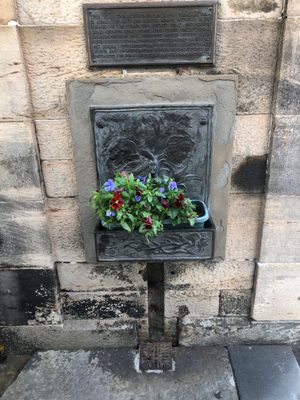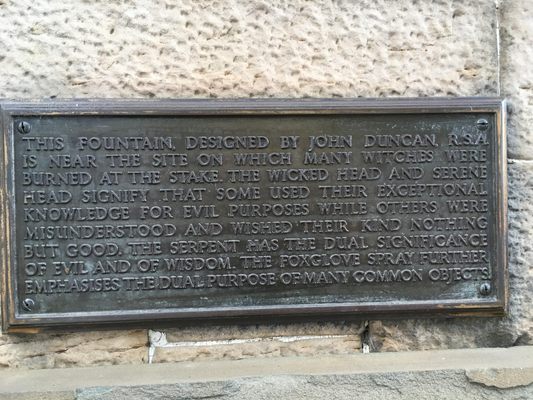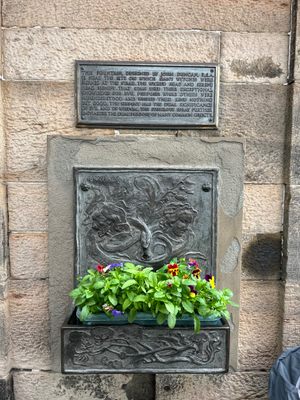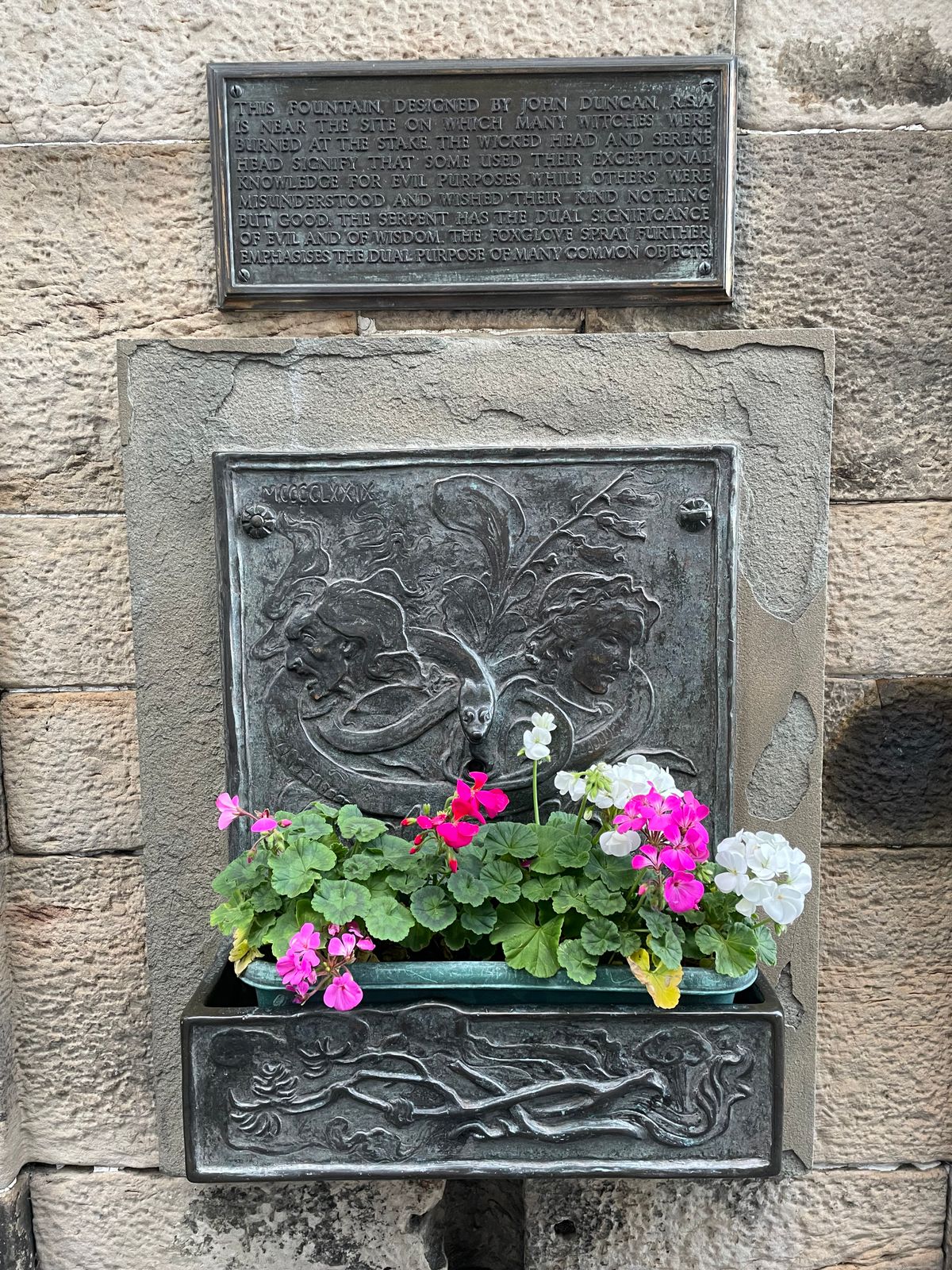About
Edinburgh Castle is a hotbed of tourist activity. More than a million people mill about its esplanade each year while they push through the throngs of visitors edging toward the castle gates. Many are unaware they’re walking atop the same ground that once saw the terrible death of hundreds of accused witches. Being accused of witchcraft the guilty parties were denied a proper burial and thus their remains were left where they perished.
The Witches' Well, a cast iron fountain and plaque, honors the Scottish people who were burned at the stake between the 15th and 18th centuries. It’s an easy site to miss for people only focusing on the castle that looms ahead. During the 16th century, more women were murdered at this site than anywhere else in Scotland. Each victim was denied a proper trial.
Scotland’s King James VI believed witchcraft was a form of Satanism and that anyone who possessed those abilities was tainted by the devil. As a result, in the 17th and 18th centuries, more than 4,000 alleged witches (mostly female) were put to death. By the end of the 17th century, witches were routinely hanged instead of being burned. The last hanging took place in 1728.
During the satanic panic of the time, anyone could be accused of using black magic. Those killed were often mere herbalists, the mentally ill, or those on the wrong end of someone else’s ill will. Suspected women were frequently bound by the hands and feet, then thrown into a lake to determine their innocence. Those who drowned were cleared, and those who had the audacity to survive were accused of witchcraft and sent to the stake.
In 1894, Sir Patrick Geddes, a philanthropist known for his innovative thinking in urban planning and sociology, commissioned his friend John Duncan to design this drinking fountain for the west side of Castlehill Reservoir next to Ramsay Garden. Duncan was a famed artist who was influenced by Celtic myth and legend, which is evident in the sculpture.
The small plaque, which features a bronze relief of witches’ heads entangled by a snake, uses dualism to highlight the balance between good and evil and to show that every story has two sides. The relief contains the image of a Foxglove plant, from the center of which is a coiled snake intertwined around the head of Aesculapius, the god of medicine, and his daughter Hygeia, the goddess of health. The Foxglove plant, though used medicinally, can also be poisonous depending on dosage, and the image of the serpent imbued with wisdom is also acknowledged as evil.
A hole beneath the snake’s head once spouted water, though it's dry now. The upper left corner contains Roman Numerals equivalent to 1479, and 1722 is depicted in the bottom right (the period of the most prevalent persecution of witches in Scotland.) The bottom left displays the year of the sculpture's completion and the sculptor’s initials: 18 (JD) 94. Two bolts on the upper corners differ in design, and are Wiccan symbols of air and water.
The trough is sculpted on three sides. The font displays flora with roots beneath the earth and branches above. The left panel depicts the Evil Eye with frowning eyes and a nose. The right side depicts a pair of hands holding a bowl, meant to represent healing hands.
A plaque above the well was erected in 1912.
Related Tags
Know Before You Go
The Witches' Well is on the wall of the Tartan Weaving Mill and Experience that faces the castle esplanade. It is very easy to miss. While heading toward the castle, as you pass the Tartan Weaving Mill, look directly to your right and you'll see it.
NEW - Flavors of Scotland: Beyond the Haggis
Smoked seafood, single malt whisky, and warm hospitality.
Book NowCommunity Contributors
Added By
Published
July 24, 2017
Sources
- http://www.bestofedinburgh.com/Page.asp?Title=*royal+mile&Section=65&Page=2
- http://www.streenge.com/places/edinburgh/attractions/witches-well.html
- http://www.edinburghnotes.com/wiki/Witches_Well
- http://www.edinburghnews.scotsman.com/our-region/edinburgh/the-witches-well-edinburgh-s-witch-trials-memorial-1-4305504



















































































